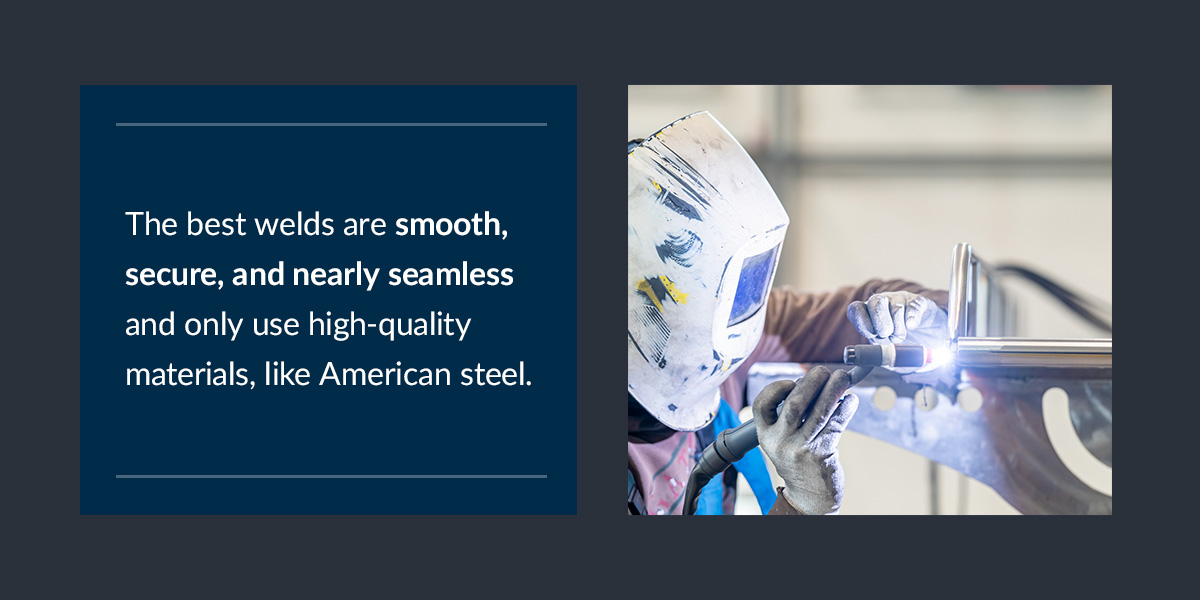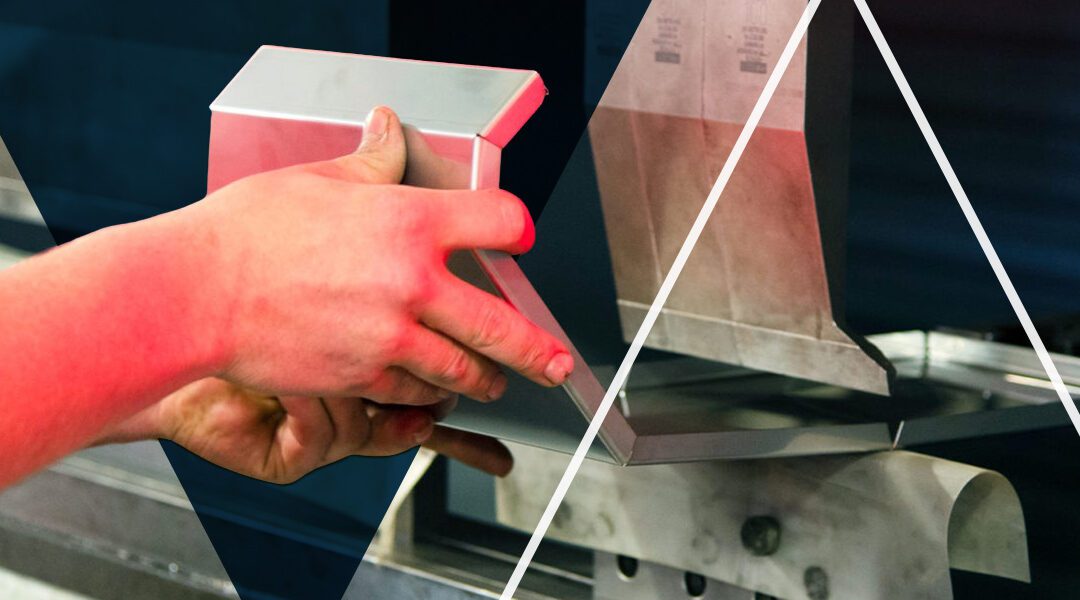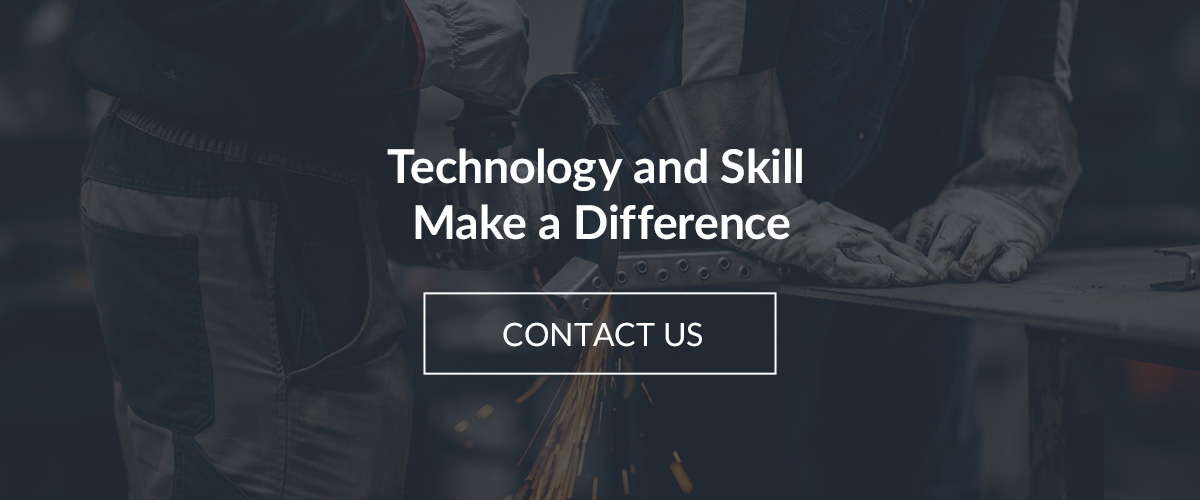Of the many different types of metal fabrication, the best one for your project will depend on what it needs, what kinds of materials you’re using, and the thickness of those materials. Here, we’ll discuss common types of fabrication you’re likely to encounter in your project planning.
First, What Is Fabrication, and How Is It Different Than Manufacturing?
Manufacturing refers to the production of parts or products using raw materials or components. It is an umbrella term that encompasses more specific production processes.
Fabrication is a subset of manufacturing, which can include laser cutting, welding, bending, and assembly. We specialize in the industrial steel fabrication process, meaning that we focus exclusively on producing 2D and 3D metal parts for industrial businesses.
Different Types of Metal Fabrication
Your material type, product design, budget, quality requirements, lead time, and quantity will generally determine which fabrication process is best. However, understanding each type and common applications can also guide informed decision-making. The most common types of metal fabrication are:
Forming or Bending
Forming distorts or bends metal into desired shapes and angles. This type of fabrication often relies on a brake press to form creases, but teams can also use hammers with clamp bars for other forms of holding. Computer numerical control (CNC) machines shape metal from a 2D to a 3D form using a press brake or, if using tubes, bending them precisely to fabrication requirements. Common applications for forming processes include creating medical devices, aerospace engine mountings, electric transmission components, and similar tasks where precision and durability are paramount to operations.
Cutting
Cutting is one of the most common types of fabrication processes. This process reduces preshaped metal to smaller sizes. There are several cutting techniques, including sawing, plasma torching, waterjet cutting, or laser cutting.
Laser cutting is the process of using automation/software on a CNC machine and a high-power laser to vaporize, burn, or melt sheet metals like steel, aluminum, and stainless steel. The laser also can interact with a jet of gas such that it produces a finished edge.
Teams typically use lasers to create 2D parts. Laser cutting produces consistently precise results across projects, including those with complex details and tight tolerances, due to the process leaving little room to introduce human error. Metals are less prone to warping under a laser cut — meaning wasting materials and energy is less likely, leading to lower costs per project. CNC laser machining creates 2D prototypes or finalized parts in both low and high quantities. We specifically group batches of parts together to maximize customers’ raw materials and production speed, making us a superior laser-cutting vendor.
Welding

Welding uses pressure and/or heat to fuse two or more metal, plastic, or wood parts (the parent material) together using additional material (either a consumable or filler). The kinds of welding used vary depending on project needs and industry. However, with metal, arc welding is the most common.
The best welds are smooth, secure, and nearly seamless and only use high-quality materials, like American steel. Our welders use metal inert gas (MIG) and tungsten inert gas (TIG) to weld stainless steel, carbon steel, and aluminum across a range of material thicknesses and customer production needs.
Common applications for welding include constructing support structures, creating industrial mechanical components, and crafting components for hydroelectric systems. Stud welding and spot welding are versatile techniques in industrial settings.
Punching
The punching process uses mechanical machines to create holes in metal pieces. This process can create unique holes in the metalwork, allowing teams to use the holes for fastening purposes or use the unique punch-outs for other applications. This process is suitable for light and heavy metalwork. Punching applications include forming components for various industries; creating metal parts for equipment, vehicles, and machinery; and ventilating metal steps or panels.
Stamping
Stamping is similar to punching but is distinct for sheet metals like copper, stainless steel, aluminum, brass, and other galvanized alloys. This process uses a turret to create an indentation rather than a hole through the metal. A significant benefit of this process is being able to create unique, custom-built designs, allowing teams to craft specialty parts. Operations like blanking, metal coining, and four-slide forming rely on stamping machines.
Shearing
Shearing is a top choice for projects that require long cuts. Typically, you can find several ways to accomplish shearing. In one method, teams feed the sheet horizontally through a cutting machine. In other methods, a team may apply a cutting tool vertically against a flat metal sheet. Another technique requires teams to place metal over an open cutter edge and lower a blade to trim the metal. While teams mostly use shearing to trim the edge of a metal sheet, they can complete this process anywhere on the metal.
This process offers high precision and accuracy, allowing teams to meet specifications and minimize errors. This process is also versatile and can minimize material waste with proper usage. Shearing has use cases in manufacturing, aerospace, construction, steel fabrication, demolition companies, and recycling plants.
Casting
Metal casting involves heating a metal until the piece reaches its melting point. At this point, teams can pour the metal into an empty mold with unique designs. The metal cools in the mold until it hardens, taking the shape of the mold. Teams then remove the metal from the mold, begin improving the metal finish, and remove minor defects.
Casting has significant advantages because teams can produce complicated shapes with minimal issues. This versatility makes casting suitable for applications like crafting plumbing fixtures, construction elements, medical devices, aerospace landing gear components, heavy machinery gear wheels, shafts, pump housings, and other components.
Technology and Skill Make a Difference
Quality metal fabrication requires the right technology and a dedication to detail, precision, timeliness, and getting the job done right the first time. Understanding the basics of common fabrication processes will help you collaborate with your fabricator and set realistic expectations for every project.
Ready to start a steel fabrication project? Contact us today.

